Zotac GeForce GTX 480 Review
Zotac GeForce GTX 480
Nvidia's flagship graphics card is fast but is it worth buying?
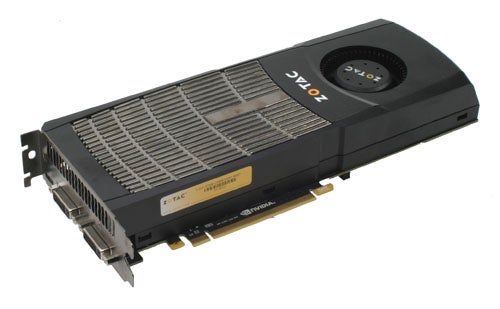
Verdict
Key Specifications
- Review Price: £463.57
The Zotac GeForce GTX 480 is based on Nvidia’s latest uber-graphics card design, the GTX 480. This card uses the Nvidia GF100 chip, which is the single fastest graphics chip on the planet and packs in all the latest features. With cards based on it demanding over £450, though, can it possibly be worth investing in? Let’s find out. 
Key among the GTX 480’s features is support for DirectX 11 gaming. This means all the latest and greatest features of the latest and greatest games will be available to you. In particular, the main highlights are tessellation, DirectCompute, and Multi-threaded rendering. We won’t cover these features in detail in this review but if you’d like to learn more about these features and other aspects of what DirectX 11 brings to the table, we suggest you check out our review of the GTX 470 (a card based on the same technology but that runs slower). 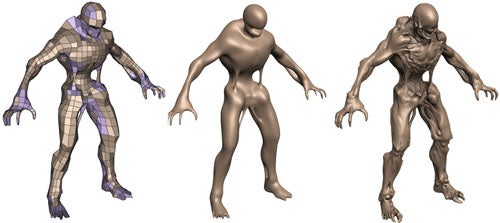
(centre)”’No Tessellation – Tessellated – Displacement Mapped”’(/centre)
Also in that review we take a look at the inner workings of the Fermi architecture upon which GF100 is based. So again, if you want to learn the nitty gritty on how these cards work we suggest you go there. For this article we’re going to stick to finding out what this card can do and whether it’s worth investing in.
Weighing in at 913g and with a length of 268mm, this is one big and bulky card, not that such a thing is exactly a surprise – its direct competitors also tip the scales at nearly one kilo. However, because it is so long, it overhangs the edge of a standard ATX motherboard and as such you’ll need to check carefully whether it’ll fit in your case, as many are only built to exactly accommodate ATX size boards. 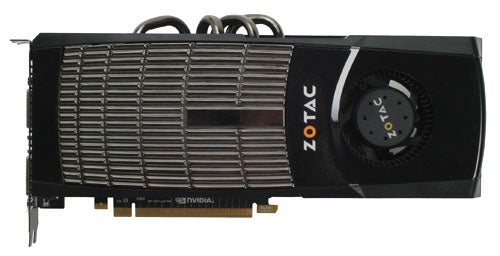
As well as being bulky, this card runs seriously hot. We’re used to high-end graphics cards being pretty toasty, but the heatpipes and heatsink of this card are scalding hot. It’s for this reason Nvidia has exposed the top of the heatsink, where normally this would be covered by the plastic shroud that covers the rest of the card: this card is supposed to be installed in a case with additional fans that should blow over the top of the heatsink for the best cooling and reliability.
Another result of all that heat is the fan has to work very hard to expel all that hot air, and a hard-working fan means a noisy fan. When not being taxed, the card ticks over at an acceptable 41dB (noise level tested from 30cm away). At full pelt, however, the card blasts out a very noticeable 64dB. 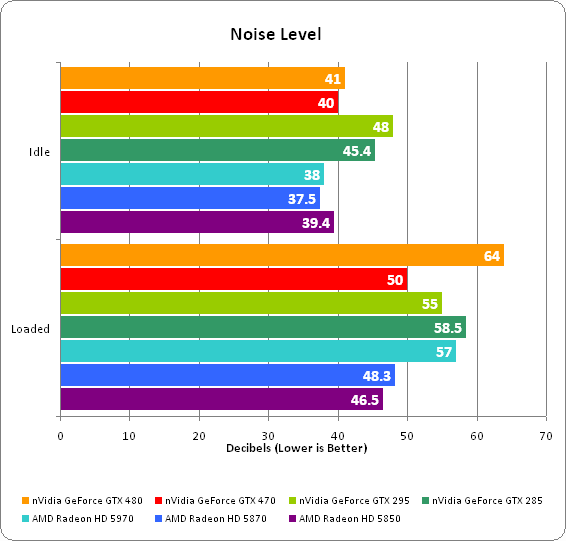
One thing to note here is when we test noise levels we do so with a normal PC setup (minus a case) that’s isolated from external noise by a padded box. Now, inevitably, being shut in a box makes temperatures rise quickly so for our test procedure we leave the box open, until the card has reached a steady operating temperature, then quickly close it and take a noise measurement.
This normally leaves us a decent window of time (a minute or so) before temperatures and thus fan speed start to ramp up significantly. However, with this card although the fan speed was lower before enclosing it, it ramped up so quickly (within a matter of seconds) that we felt this was a fair indicator of expected noise levels. If you do have a particularly well ventilated case it might run a bit quieter, but considering the extra ventilation you’ll need the overall noise of your PC will probably still be significant. 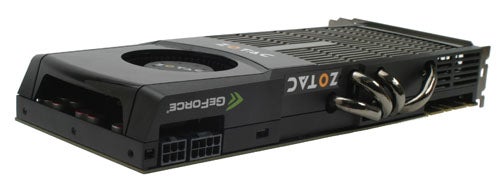
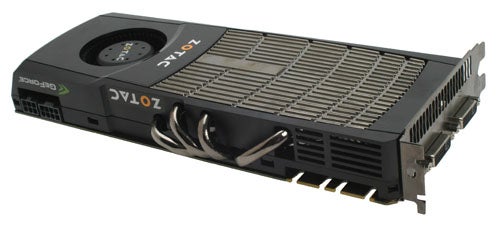
Another thing to consider with regards installing this card is its power requirements. It requires both a six-pin and an eight-pin PCI-E auxiliary power connection, the connectors for which run along the top edge. Most decent modern power supplies rated to above 400W should have these connections, but it’s worth double checking yours before you buy.
If money really is no object for you then you can run two or even three of these cards together in an SLI configuration for the ultimate in performance. The connectors for doing so are incorporated into the top edge of the PCB as per usual. You don’t, however, get any connector ribbons in the box: these should be provided with compatible motherboards. 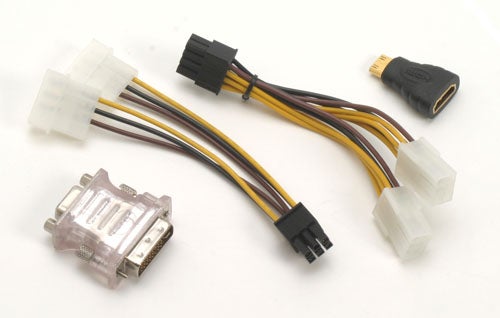
What you do get in the box is a clear if slightly dated installation manual (seriously, windows XP screenshots?!), a driver CD, and some Nvidia tech demos that show off various DirectX 11 features and the potential of CUDA (Nvidia’s general-computing-on-a-graphics-card platform), which is used to accelerate many tasks like video playback and pdf reading. Also present are two power cables, one for converting two Molex connectors to a six-pin PCI-E connector, and one for converting two six-pin PCI-E connectors to one eight-pin connector. Finishing things off are adapters for DVI-to-VGA and mini-HDMI-to-HDMI.
As will have been suggested by that last sentence, video outputs consist of a mini-HDMI and two dual-link DVI-I. The latter can be converted to VGA, HDMI, or DisplayPort with appropriate adapters. The mini-HDMI port can be used to pull the audio signal from your PCs sound card and pass it out to a TV or monitor with speakers giving you a neat single cable solution. However, unlike ATI, you can’t do the same with the DVI ports and the latest lossless compressed audio formats (DTS-HD and Dolby TrueHD, as used on Blu-rays) aren’t supported, though arguably these are very niche formats.
Also, though Nvidia makes a big deal about the GTX 400 series being able to do surround- and 3D surround-gaming with three monitors, one card can only support two monitors at once. You will in fact need two cards in SLI if you want surround gaming. ATI’s HD 5000 series, on the other hand, can output to three monitors from a single card. 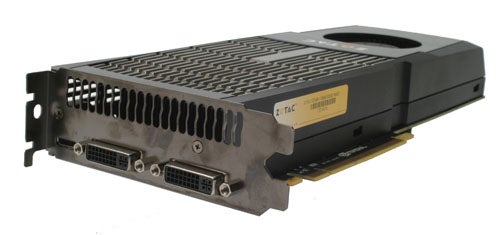
The only things that mark this card out as being built by Zotac are the various stickers applied to the fan shroud – the card hasn’t been overclocked or tweaked in any other way from the reference Nvidia design. Like most of the other board partners, Zotac will be releasing an overclocked version shortly, though.
Looking at the raw numbers of these cards, there’s little to be concluded when comparing ATI to Nvidia as the two companies use such differing architectures. However, we can at least compare cards within the two companies. 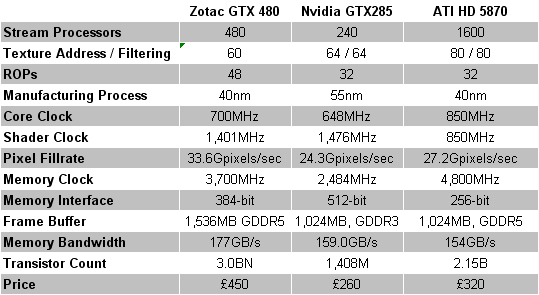
Most notable is the GTX 480 has twice the number of Stream Processors (or CUDA cores as Nvidia now calls them) as its predecessor the GTX 285. Combined with an increase in ROPs and clock speed it’s fair to expect the GTX 480 to be considerably faster than the GTX 285. You may notice that the memory interface has dropped in width from 512 bits wide to just 384. This won’t, however, result in a drop in performance as the GTX 480 uses much faster GDDR5 memory.
The GTX 295 and HD 5970 both use two graphics chips on a single card to bolster their performance, which explains the enormous raw numbers we see in the table above. This solution can have great benefits for performance if the card works correctly but it’s much more prone to compatibility issues, and these cards can sometimes perform worse than single chip equivalents. As such we’re always wary of recommending these dual-chip cards.
While architecturally it’s difficult to compare Nvidia and ATI cards, there are a few clear feature differences. For a start, there’s the lack of support for PhysX in ATI’s cards. This is the physics simulation engine used on a number of modern games, with Mirror’s Edge being a particularly well-known example. In the long run, there is likely to be a transition to using open standards for physics calculations, and certainly not every game uses the tech, but for the time being you do miss out on this feature.
Also, Nvidia supports 3D gaming on its cards, though frankly we don’t see this as much of a value-add yet, especially as you need special high-speed monitors and the glasses to take advantage of it. Finally, the GTX 400 series are the first graphics cards able to apply antialiasing to foliage in Crysis. A minor point, perhaps, but if you want the best visual quality in that game, it’s worth considering. 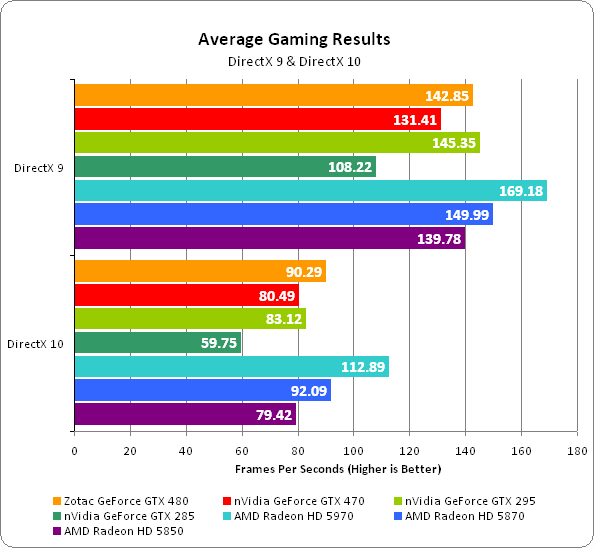
(centre)”’See next page for full results”’(/centre)
So that’s this card’s features but of course the all important part is performance and here the Zotac GeForce GTX 480 holds up pretty well. Starting with our DirectX9 and DirectX10 games tests, it clearly takes a monumental leap forward in performance over its predecessor the GTX 285 and mostly beats the GTX 295. However, while it still holds a lead over ATI’s HD 5870, it’s not nearly as significant a one and the HD 5970 comfortably takes the overall crown. 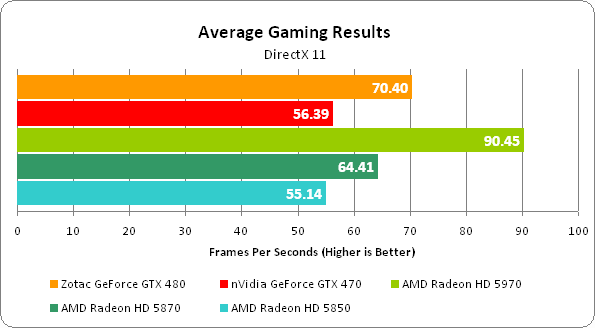
(centre)”’See next page for full results”’(/centre)
When it comes to DirectX 11 titles, the GTX 480 holds a strong lead over the HD 5870 in two out of the three tested titles but falls comfortably behind in Just Cause 2. Overall we expect the GTX 480 to come out on top on average against its single-chip counterparts as more DirectX 11 titles come out, though. However, when it comes to out and out performance the ATI HD 5970 is way ahead of all the other cards on test. Even considering our concerns mentioned earlier, it’s hard to ignore just how fast this card is. 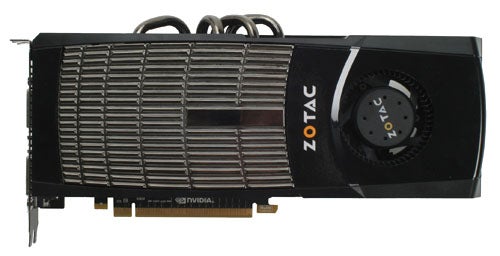
This ignores cost, though, which makes the HD 5970 look like a less attractive proposition. Purely on a value level it’s not much worse than the GTX 480, but £550 is just an insane amount of money to spend on a single graphics card. Moreover, when the HD 5870 costs ”just” £350, neither of these cards seems like good value. Indeed, that’s the key point about the GTX 480: yes, it’s the fastest single-chip card on the planet but it’s not £100 faster than the HD 5870 and for most gamers with a single screen it’s just overkill.
”’Verdict”’
The Zotac GeForce GTX 480 is the fastest single-chip graphics card on the planet; that much is clear. Arguably it also holds an advantage when it comes to features, thanks to PhysX support amongst other things. However, when it comes to value it simply doesn’t deliver. Add in that it runs extremely hot and noisy and sucks up loads of power and we can think of few reasons to recommend it over the cheaper alternatives from ATI.

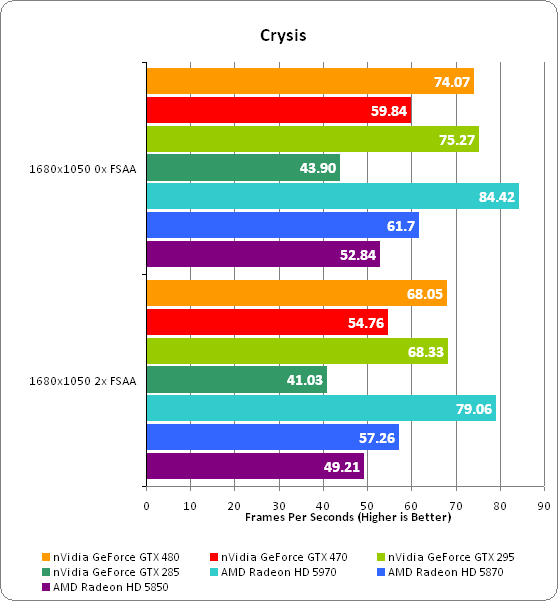
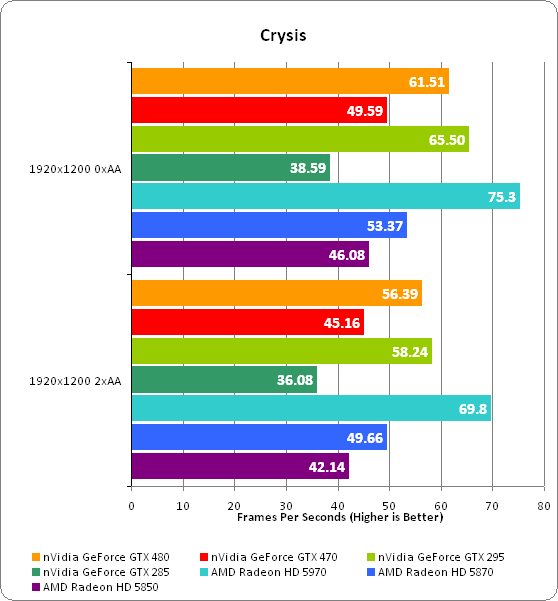
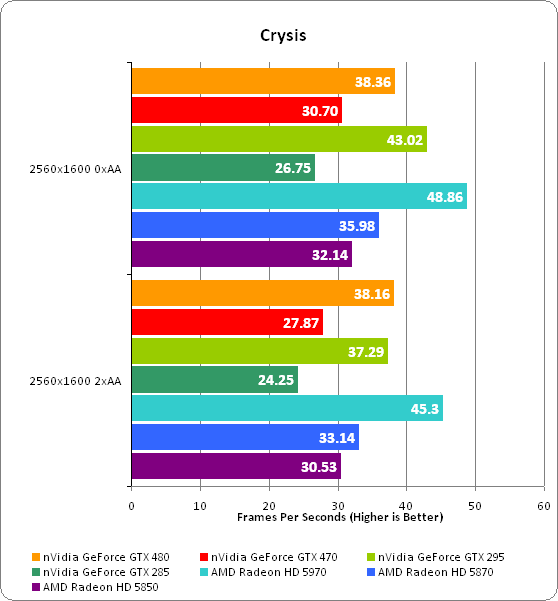
—-
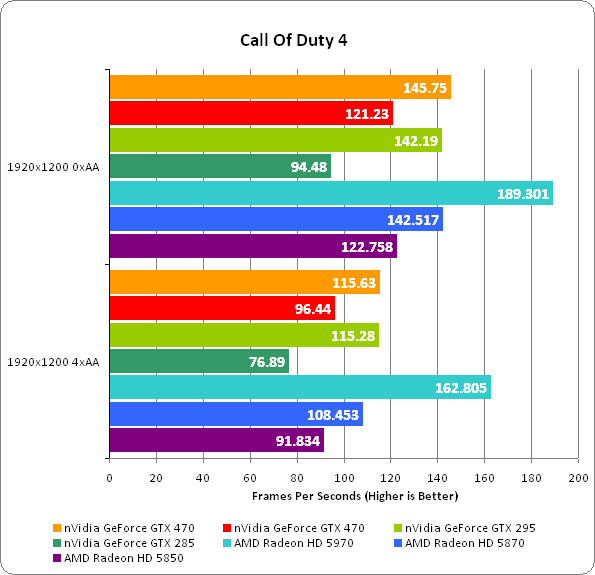
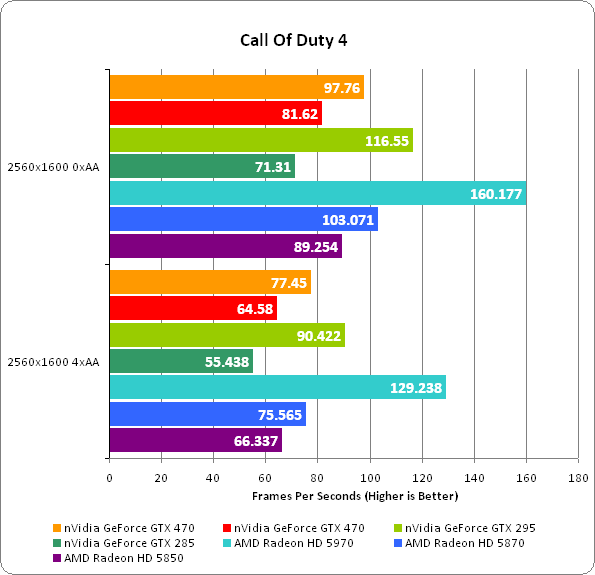
—-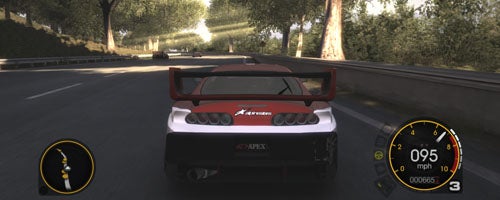
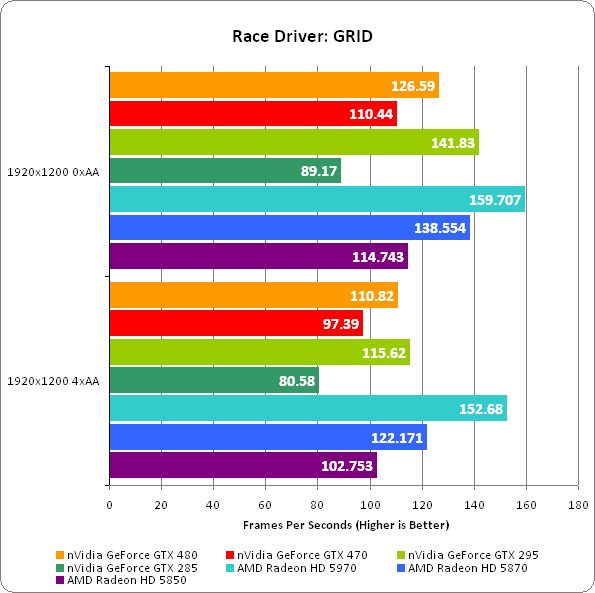
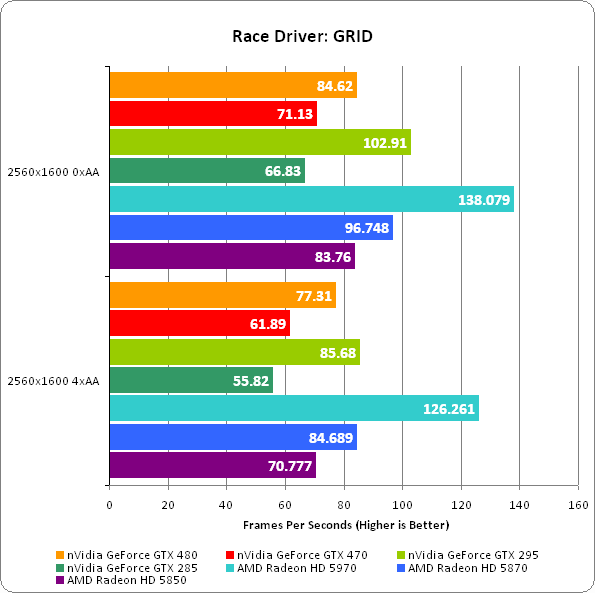
—-
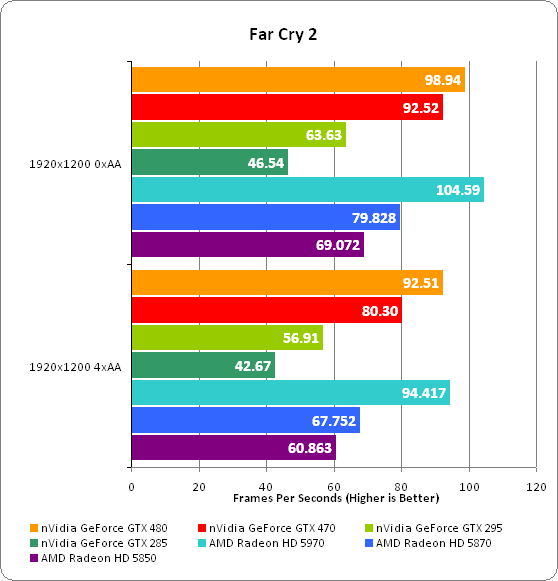
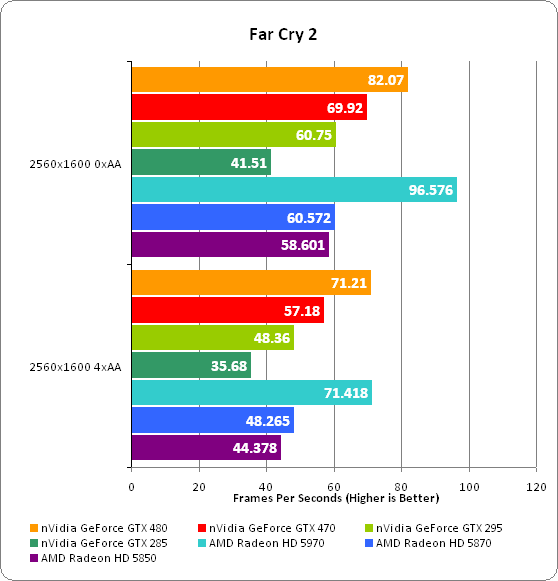

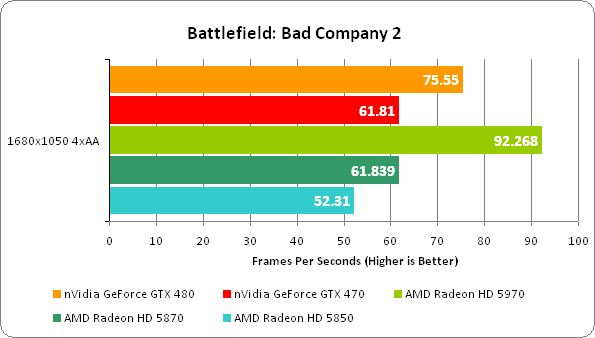
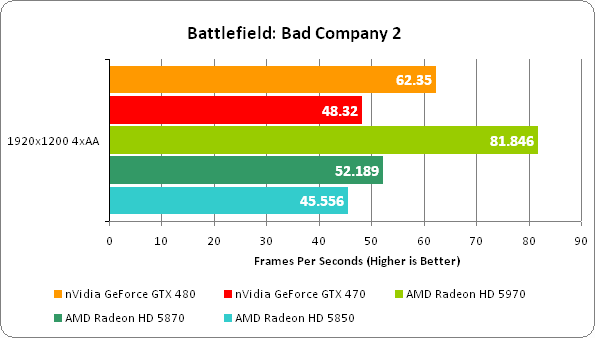
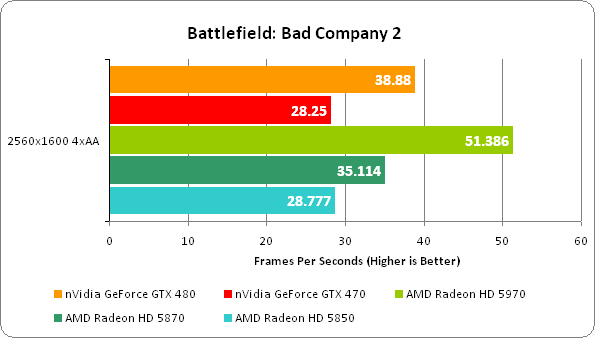
—-
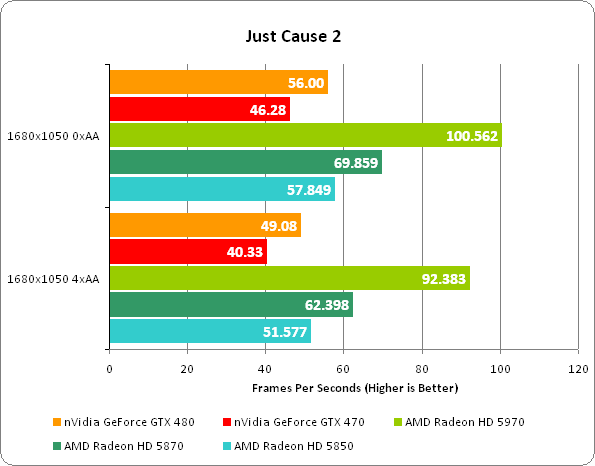
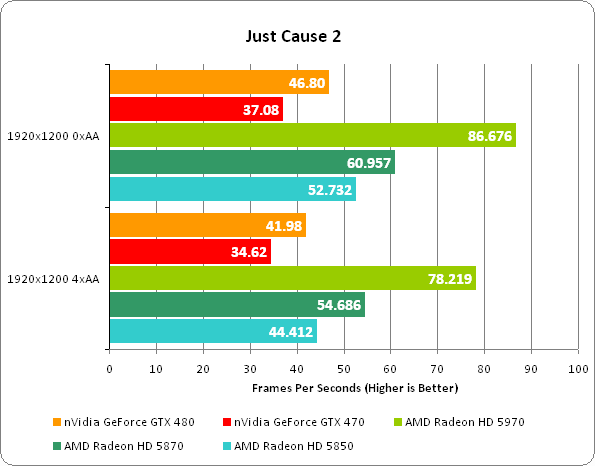
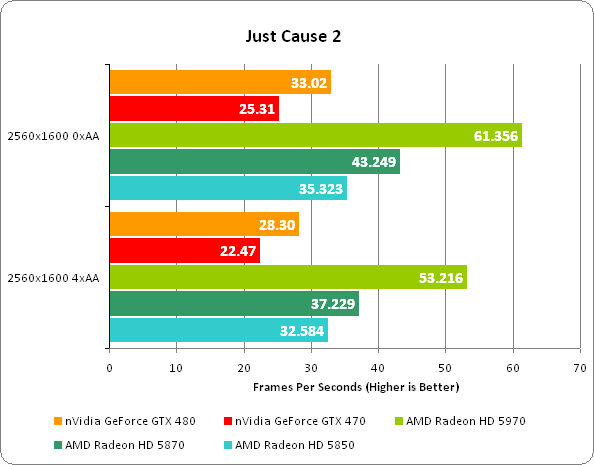
—-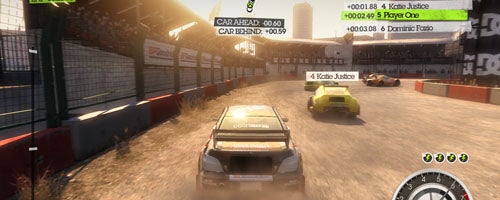
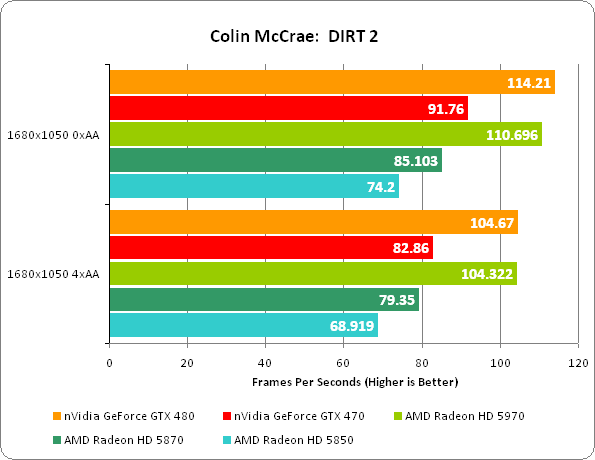
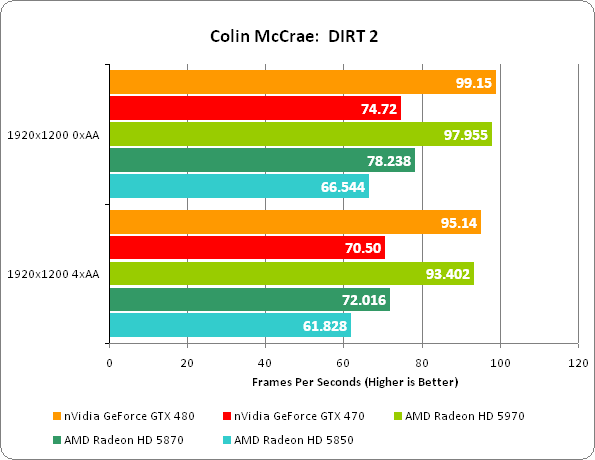
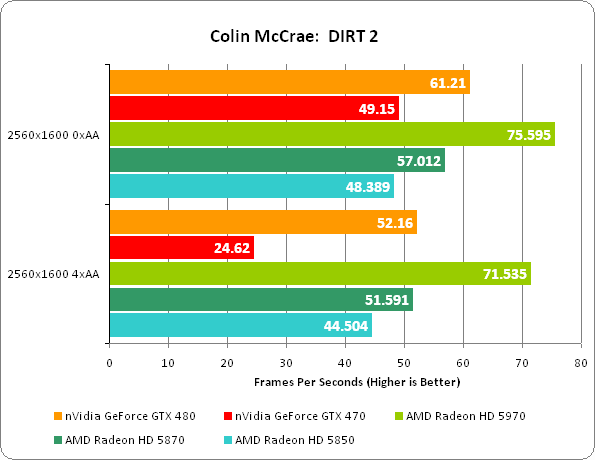
—-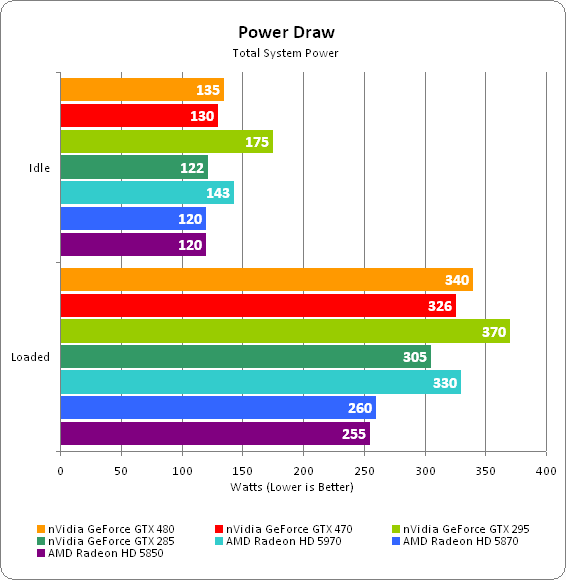
Trusted Score
Score in detail
-
Value 6
-
Features 8
-
Performance 9

